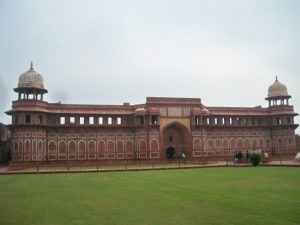
A visit to the Taj Mahal in Agra, India is a once in a lifetime experience. Luckily, this faraway adventure is not in an isolated location all by itself. Nearby Jaipur is home to the City Palace, Janter Manter, Hawa Mahal, and the Amer Fort. The travel between Jaipur and Agra can include a stop at Fatehpur Sikri. After taking a leisurely stroll at the Taj Mahal, there should be ample time to alsp explore the Agra Fort and Sikandra.
Visitors undoubtedly will keep the Taj experience at the top of their list. However, most will agree that Agra and Jaipur are also the home to spectacular places that showcase India’s cultural heritage.
Fatehpur Sikri (the City of Victory)
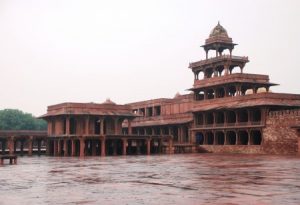
In the second half of the 16th century, the Mughal Emperor Akbar built this red sandstone complex to be the capital of his empire. An 11-kilometer wall that includes several entranceways prevented anyone from entering unannounced. Inside were public and private buildings that serviced the people who lived there.
Like other structures of this period, there were imperial pavilions and palaces connected by courtyards, a harem, and accommodations for Akbar’s wives. One of the largest mosques, Jama Masjid is also inside. The architectural style is a fusion of Hindu, Jain, and Islamic characteristics.
Due to a lack of water, the city was abandoned shortly after its completion. It remained a ghost town for hundreds of years. Other than natural wear and tear, the imperial complex is in good shape and isn’t overwhelmed by hordes of visitors.
Agra Fort
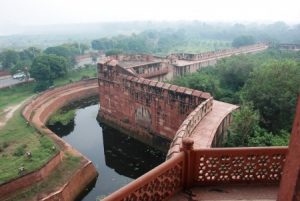
The Agra Fort is considered by reputable travel sites to be India’s most important fort. Many of the Mughal leaders lived and worked in this capital city. Foreign officials and travelers frequently visited. The main state treasury and mint were also located here.
The fort was designed with a semi-circular plan that lies parallel to the Yamuna River. The towering walls are approximately 70 feet high. The original structure had four gates, one on each side.
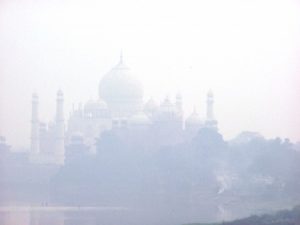
On a clear day, one can take a distant photo of the Taj Mahal. It is less than three kilometers away.
Sikandra
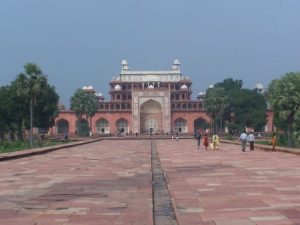
It was customary for Mughal rules to memorialize their existence. Akbar the Great, arranged for the building of this impressive tomb before he died. By taking an active lead in its construction, one can gain a sense of his importance.
The entrance is striking. One approaches the structure via a welcoming walkway. The four white marble minarets stand in contrast to the dark red sandstone mega structure. The attention to detail speaks to a former generation of craftsmen who meticulously created mosaic patterns.
Wildlife roams freely in the park like setting and adds to the monuments serenity. There’s an aura of peacefulness as one walks through Akbar’s monument.
This site is in close proximity to the central part of Agra (less than 6 miles). It is a convenient stop on the drive back to Delhi.
Taj Mahal
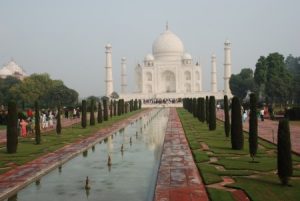
Living in an age when most westerners have simple graveside burials, few can relate to this 17th century mausoleum complex that took over 20 years to construct. Mughal emperor Shah Jahan spared no expense.
He built this famous white marble landmark to memorialize his wife who died giving birth to their 14th child. Now that’s a remarkable love story.
The emperor chose a location across the Yamuna River from his own residence, the Agra Fort. On a clear day, don’t forget to take pictures that will remind you of the emperor’s broken heart.
Up close photos at the Taj Mahal site capture the evolving beauty of the massive white marble edifice that shows hints of Indian, Persian, and Islamic influences. It’s a photographer’s dream location. This place responds unpredictably to the ebb and flow of the sun’s rays. It’s wise to walk around the complex and take pictures from all angles. Professionals and novices will go home with an assortment of shots.
If the Taj Mahal is on your bucket list, I recommend adding these places to your itinerary.
If you’ve traveled to the Golden Triangle, what was your favorite place?
THE ABOVE ARTICLE WAS ORIGINALLY PUBLISHED ON January 19, 2016. IT IS BEING REPOSTED ON THIS SITE BECAUSE THE EXAMINER SITE SHUT DOWN IN JULY, 2016. SOME PARTS OF THE ORIGINAL ARTICLE HAVE BEEN UPDATED AND THE ORIGINAL SLIDE SHOW HAS BEEN ELIMINATED AND REPLACED WITH A SELECTION OF PHOTOS.
RELATED BLOGS
Jaipur, India—3 Historic Places
Celebrating India Independence Day in Mumbai
Exploring Mumbai During Monsoon Season
What I learned From Teaching in India (My Gutsy Story)
New Experiences with Monkeys in India (We Said Go Travel)
Living Without Regrets (Family Circle)
BIO
Sandra Bornstein is a freelance travel writer. She shares her travel experiences and recommendations on this blog and on other websites—One Travel: Going Places, Cheapoair.com Miles Away Travel Blog, We Said Go Travel, Mom It Forward, Boulder Jewish News, and Family Circle.
Sandra is the author of MAY THIS BE THE BEST YEAR OF YOUR LIFE. This memoir highlights Sandra’s living and teaching adventure in Bangalore, India. She is a licensed Colorado teacher who has taught K-12 students in the United States and abroad as well as college level courses. Sandra is married and has four adult sons.
The memoir was a finalist in the Travel category for the 2013 Next Generation Indie Book Awards, the 2013 International Book Awards, the 2013 National Indie Book Excellence Awards, 2013 USA Best Book Awards, and a Honorable Mention award in the Multicultural Non-Fiction category for the 2013 Global ebook Awards.
Leave a Reply
You must be logged in to post a comment.